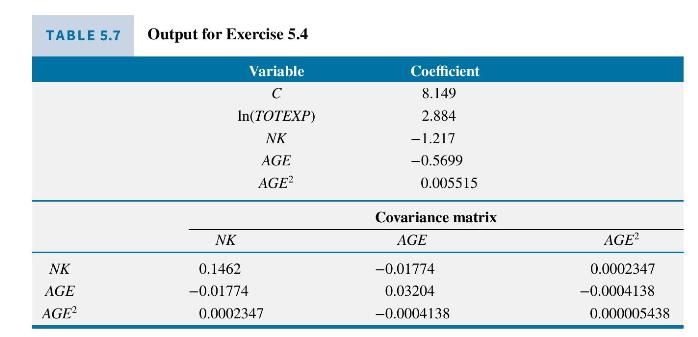Consider the following model that relates the percentage of a household's budget spent on alcohol, (W A
Question:
Consider the following model that relates the percentage of a household's budget spent on alcohol, \(W A L C\), to total expenditure TOTEXP, age of the household head \(A G E\), and the number of children in the household \(N K\).
![]()
Some output from estimating this model using 1200 observations from London is provided in Table 5.7. The covariance matrix relates to the coefficients \(b_{3}, b_{4}\), and \(b_{5}\).
a. Find a point estimate and a \(95 \%\) interval estimate for the change in the mean budget percentage share for alcohol when a household has an extra child.
b. Find a point estimate and a \(95 \%\) interval estimate for the marginal effect of \(A G E\) on the mean budget percentage share for alcohol when (i) \(A G E=25\), (ii) \(A G E=50\), and (iii) \(A G E=75\).
c. Find a point estimate and a \(95 \%\) interval estimate for the age at which the mean budget percentage share for alcohol is at a minimum.
d. Summarize what you have discovered from the point and interval estimates in (a), (b), and (c).
e. Let \(\mathbf{X}\) represent all the observations on all the explanatory variables. If \((e \mid \mathbf{X})\) is normally distributed, which of the above interval estimates are valid in finite samples? Which ones rely on a large sample approximation?
f. If \((e \mid \mathbf{X})\) is not normally distributed, which of the above interval estimates are valid in finite samples? Which ones rely on a large sample approximation?

Step by Step Answer:

Principles Of Econometrics
ISBN: 9781118452271
5th Edition
Authors: R Carter Hill, William E Griffiths, Guay C Lim





